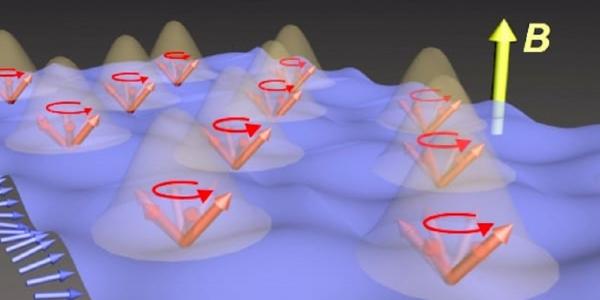Ultrastrong Light-Matter Coupling: Dicke Cooperativity
Recent advances in optical studies of condensed matter have led to the emergence of a variety of phenomena that have conventionally been studied in quantum optics. These studies have not only deepened our understanding of light-matter interactions but also introduced aspects of many-body effects inherent in condensed matter. This talk will describe our recent studies of Dicke cooperativity, i.e., many-body enhancement of light-matter interaction, a concept in quantum optics [1]. This enhancement has led to the realization of the ultrastrong coupling (USC) regime, where new phenomena emerge through the breakdown of the rotating wave approximation (RWA) [2]. We will first describe our observation of USC in a 2D electron gas in a high-Q THz cavity in a magnetic field [3]. The electron cyclotron resonance peak exhibited a polariton splitting with a magnitude that is proportional to the square-root of the electron density, a hallmark of Dicke cooperativity. Additionally, we obtained definitive evidence for the vacuum Bloch-Siegert shift [4], a signature of the breakdown of the RWA. The second part of this talk will present microcavity exciton polaritons in a thin film of aligned carbon nanotubes [5] embedded in a Fabry-Pérot cavity. This system exhibited cooperative USC with unusual continuous controllability over the coupling strength through polarization rotation [6]. Finally, we have shown that Dicke cooperativity also occurs in a magnetic solid in the form of matter-matter interaction [7]. Specifically, the exchange interaction of N paramagnetic Er3+ spins with an Fe3+ magnon field in ErFeO3 exhibited a Rabi splitting whose magnitude is proportional to N1/2. These results provide a route for understanding, controlling, and predicting novel phases of condensed matter using concepts and tools available in quantum optics.
- For a review, see K. Cong, Q. Zhang, Y. Wang, G. T. Noe II, A. Belyanin, and J. Kono, J. Opt. Soc. Am. B 33, C80 (2016).
- For a review, see P. Forn-Díaz, L. Lamata, E. Rico, J. Kono, and E. Solano, Rev. Mod. Phys. 91, 025005 (2019).
- Q. Zhang et al., Nat. Phys. 12, 1005 (2016).
- X. Li et al., Nat. Photon. 12, 324 (2018).
- X. He et al., Nat. Nanotechnol. 11, 633 (2016).
- W. Gao et al., Nat. Photon. 12, 362 (2018).
- X. Li et al., Science 361, 794 (2018).
Junichiro Kono received his B.S. and M.S. degrees in applied physics from the University of Tokyo in 1990 and 1992, respectively, and completed his Ph.D. in physics from the State University of New York at Buffalo in 1995. He was a postdoctoral research associate at the University of California, Santa Barbara, in 1995-1997 and the W. W. Hansen Experimental Physics Laboratory Fellow in the Department of Physics at Stanford University in 1997-2000. He joined the Department of Electrical and Computer Engineering of Rice University in 2000 as an Assistant Professor and was promoted to an Associate Professor in 2005 and to a Professor in 2009. He is currently Karl F. Hasselmann Chair in Engineering, serving as a Professor in the Departments of Electrical & Computer Engineering, Physics & Astronomy, and Materials Science & NanoEngineering as well as the Chair of the Applied Physics Graduate Program at Rice University. Professor Kono was a recipient of the National Science Foundation CAREER Award in 2002 and has been a Fellow of the American Physical Society (APS) since 2009, a Fellow of the Optical Society (OSA) since 2015, and a Fellow of SPIE since 2019. Professor Kono is also the founder of the nationally recognized international program for science and engineering undergraduate students, NanoJapan, funded by the U.S. National Science Foundation, receiving the Heiskell Award for Innovation from the Institute of International Education in 2008.
Image: Rice University scientists observed Dicke cooperativity in a magnetic crystal in which two types of spins, in iron (blue arrows) and erbium (red arrows), interacted with each other. The iron spins were excited to form a wave-like object called a spin wave; the erbium spins precessing in a magnetic field (B) behaved like two-level atoms. Illustration by Xinwei Li
Register for Colloquium
